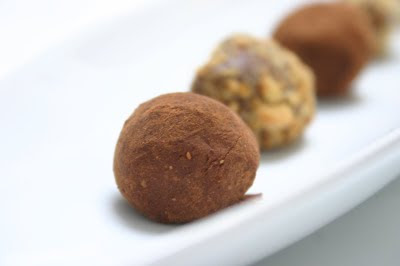
Serve this dish as part of a buffet or as a meal on it’s own. This makes a very nice and filling vegetarian main course. For those of you watching you fat intake, you can grill the aubergines can be instead of frying them. For those on a low carb diet, good news; this dish is naturally now in carbs so you can indulge!
Here is what you will need to serve 6 as a main course:
Olive oil
3 medium aubergines
Rock Salt
2 cans x 400g chopped tomatoes
1 garlic clove
400gr grated Parmesan cheese (hence the name)
Start off by washing and slicing the aubergines lengthwise, peeling is not necessary however if you prefer them peeled then this won’t effect the dish. Next, place the slices in a colander and sprinkle generously with rock salt between the layers. Now place something heavy on the colander to weigh the slices down and let the aubergines drip for a couple of hours or even overnight. I like to place a bowl with my pestle and mortar in it, it makes the tower heavy enough!
Once the aubergines have dripped, discard the dark liquid and rinse them clean of the salt. Pat the slices dry and set them aside.
If you are frying the aubergines, heat some olive oil in a pan and fry the aubergines until they are golden in colour. Once they are cooked, place the slices on a plate lined with some paper
towels to absorb the excess oils.
A healthier option would be to grill the slices on a griddle pan or even uur oven grill. Make sure to keep an eye on them if you are grilling as they will burn in no time and will become hard and bitter.
In the meantime, prepare your tomato sauce by placing some garlic cloves in a pot with a little bit of olive oil. Once the garlic starts to cook, add 2 x 450g tins of tomato cut in pieces. Cook over medium heat stirring occasionally.
Once the aubergines and the sauce are ready all you need to do is to compile the dish.
Start off by preparing your oven dish; spread some olive oil on the base making sure that all the corners are well oiled. Next place some of the sauce on the bottom of the dish to just about cover it. Next place a layer of aubergine slices to cover the dish completely, place some of the sauce and spread it to cover the aubergines and sprinkle some of the cheese over the sauce.
Continue to assemble the dish in this manner until you have run out of you aubergines and sauce. Make sure to leave enough sauce for the top layer. The last layer needs to be covered in sauce and sprinkled with a generous helping of cheese. Season with salt and pepper and your parmiggana is done.
At this point to you can refridgerate until you are ready to bake.
Cook the parmiggana in a pre-heated oven at 150C. Cooking time should be around 30 to 40 minutes. Your parmiggana is ready once the middle of the dish feels firm. Don’t worry about the sides becoming a little bit overcooked; it’s part of the charm of eating a rustic dish!
Should you like to make the dish a little bit more cheesy add 1 layer of mozzarella half-way through your layering.
As all other baked dishes, this dish improves with time, so you can bake it a day ahead and re-heat in an oven before serving. Parmiggiana can also be served cold.





























